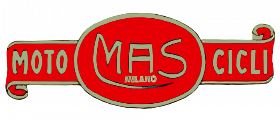In the early twenties the Harley-Davidson had won a good reputation in Europe in racing. Although it did not have a very sporty appearance, the large displacement of its engines sometimes allowed riders to prevail over competitors mounted on much smaller capacity machines. For example, on a Harley-Davidson 1000 Model F the young Tazio Nuvolari earned his first motorcycle victory at the Circuit of Mantua in 1922.
However, despite the prestige and growing brand awareness, sales in Europe remained very poor mainly because prices greatly exceeded those of motorcycles produced on the Continent. The solution materialized in building a lightweight motorcycle in Europe with which to take advantage of the reputation of the Harley-Davidson brand and the related network of sales and service. At the end of the twenties the first era of two-stroke engines came to an end, to be reborn after World War II thanks to the insights of Adalberto Garelli with his rotary disc valve and Walter Kaaden on resonance properties of two-stroke exhausts.
By 1930 the four-stroke engines, thanks to the continuous evolution of the automotive and aeronautical sectors, now largely out-performed, for the same displacement, the two-stroke engines. This was the main reason why the production of Harlette was entrusted to MAS Eng. Alberico Seiling, who equipped Harlettes with a four-stroke single cylinder OHV 175cc engine of 175 cc of their own design and construction.
After the termination of the commercial brand Harlette in 1930, Seiling continued production and evolution of the brand Motoleggera with MAS and, later, with the Altea marque.
More information at Bretti Brothers Page
MAS Harlette


